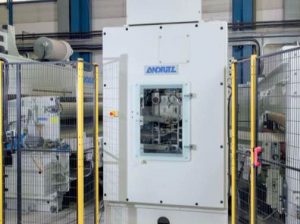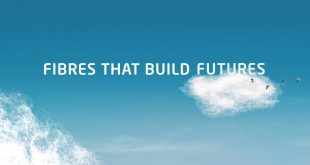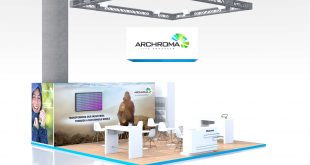 Focusing on the equipment itself, two major needling innovations have been launched recently: the PA.3000-cylinder pre-needler and the SDV-2+2 double-velour needleloom. Each of these technologies addresses the complex world of automotive nonwovens by providing a differentiated added value, greater operating efficiency, and an improved visual aspect.
Focusing on the equipment itself, two major needling innovations have been launched recently: the PA.3000-cylinder pre-needler and the SDV-2+2 double-velour needleloom. Each of these technologies addresses the complex world of automotive nonwovens by providing a differentiated added value, greater operating efficiency, and an improved visual aspect.
There are also many additional features in our cards, chute feeders, crosslappers and needlelooms that contribute towards making our customers more cost-efficient and flexible. Keeping the machines cleaner is also a major topic.
The cylinder pre-needler PA.3000, with more than 70% extra surface-impact needling capacity, has been specifically designed for markets requiring products with a high-quality visual aspect, such as automotive, in addition to the draft-free advantage during the pre-needling stage. As it operates without internal draft, it is the ideal solution for processing fibre mats thanks to new capabilities to freeze the fabric evenness. It is perfect for high-speed processing of lightweight products, in particular for 50-80 gsm fabrics, and offers an extended width of up to 6.75 m. Cylinder pre-needlers are very popular with producers of nonwovens. In fact, some of our customers would not consider a line without them. They have many advantages and can be used in all types of applications. What producers really like is the simple, trouble-free operation they bring. The PA.3000 is an important development, allowing high-speed pre-needling for low weights and large widths.
ANDRITZ has extended its SDV velour needleloom range, specifically designed to maximize the output of hard-wearing, visually attractive fabrics – predominantly for the automotive industry. The SDV-2+2 double-velour needleloom has been purpose-built in response to two important challenges in the automotive industry:
– It is well known that the velour “loop” quality is improved if looping takes place immediately after the pre-needling process. Hence, the ideal line set-up is to have the velouring needleloom “inline” together with the carding-pre-needling equipment. Then come the economic constraints of such a process. The carding set can easily produce twice as much as a single (two-board) velouring needleloom. In order to be cost-competitive, the double SDV-2+2 is a must, with a production speed of 10 m/min or more depending on the fabric needling density.
With a working width from 2.28 m to 5.3 m, a 4.40 m working width for the SDV-2+2 is often the ideal production set-up. The SDV-2+2 can be used offline as well and enables up to 2,000 strokes per minute. The random needling pattern provides greater flexibility in terms of advanced pitch with no marking.
– The SDV-2+2 double-velour needleloom handles velour and also applies mechanical consolidation with an additional unwound layer between the two needleloom frames. Importantly, this has been included so as to have no fibre contamination between the velour layer and the underlayer.
To test these innovations, ANDRITZ offers nonwoven producers the opportunity free of charge to visit its technical center in Normandy, France, dedicated to needlepunch processes (including the latest ANDRITZ innovations).
Customers can run specific trials to fine-tune their product development and validate both production output and visual aspect. In response to premium market requirements, this facility also includes a brand-new, offline double-velour SDV-2+2 needleloom. Outsourcing of production capacity is also available on demand.
Another important point is that thanks ANDRITZ can now offer new technologies for its customers following the integration of Laroche.
The Flexiloft airlay web forming technology can produce high-quality sound insulation felts in the 500-5000 gsm range and containing a high proportion of inexpensive recycled fibers. Components such as foam chips can also be incorporated into these felts to enhance their performance. A new development enables customers to make so-called “3D felts”, where fiber patches are distributed in strategic locations to maximize performance while reducing total weight. ANDRITZ Laroche also proposes innovative solutions for recycling all types of waste products from the manufacture of automotive parts, such as trimmings from the needlepunch lines to offcuts from molded parts.
 Tekstil Teknik Dergisi Tekstil Haberleri, Tekstil Sektörü, Tekstil Teknik
Tekstil Teknik Dergisi Tekstil Haberleri, Tekstil Sektörü, Tekstil Teknik




